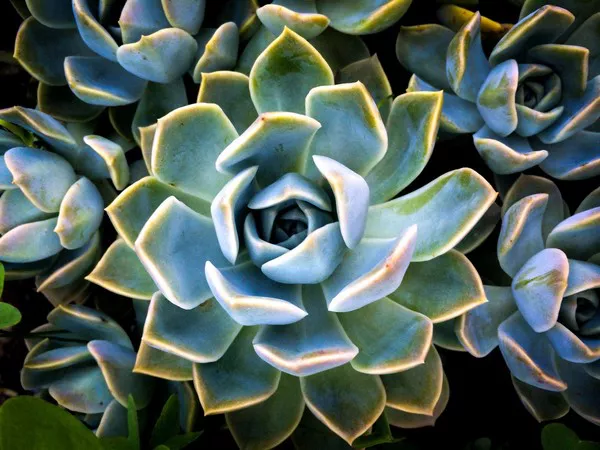Succulents, with their diverse shapes and vibrant colors, have become a popular choice for plant enthusiasts and decorators alike. One creative and visually stunning way to showcase these resilient plants is by planting them on driftwood. The marriage of succulents and driftwood not only adds a touch of natural elegance to your living space but also provides an opportunity to create a unique and captivating display. In this comprehensive guide, we will explore the step-by-step process of planting succulents on driftwood, ensuring a successful and aesthetically pleasing project.
Selecting the Right Driftwood
The foundation of a successful succulent-on-driftwood project begins with selecting the right piece of driftwood. Look for driftwood pieces that are well-aged, weathered, and free from any signs of decay. The ideal driftwood should have interesting contours and crevices, providing natural pockets for planting succulents. Ensure that the driftwood has been thoroughly cleaned and properly dried to prevent mold or rot from affecting your succulents.
Preparing the Driftwood
Before planting succulents on driftwood, it’s crucial to prepare the wood to create a hospitable environment for the plants. Soak the driftwood in water for 24-48 hours to rehydrate it and remove any residual salts. This process also helps eliminate potential pests. Once soaked, allow the driftwood to air-dry completely before proceeding with the planting. This ensures that the wood is ready to absorb water from the succulents’ roots without competing with them.
Choosing the Right Succulents
Selecting the appropriate succulents for your driftwood project is a key decision that influences the overall aesthetics and success of the arrangement. Opt for a variety of succulents with different colors, textures, and growth habits to create a visually dynamic display. Consider factors such as the lighting conditions in your space and the water requirements of the chosen succulents. Ensure that the selected succulents are compatible in terms of growth speed and water needs to maintain a harmonious and healthy arrangement.
See Also: How to dry out succulent soil?
Preparing the Succulents
Before planting succulents on driftwood, it’s essential to prepare the plants for their new environment. Gently remove the succulents from their pots, taking care not to damage the roots or leaves. If the succulents are root-bound, gently tease apart the roots to encourage outward growth. Allow the succulents to air-dry for a day or two to promote callusing, which helps prevent root rot when they are planted on the driftwood.
Securing the Succulents on Driftwood
The next step involves attaching the succulents to the driftwood securely. Start by applying a layer of cactus or succulent soil mix to the areas of the driftwood where you intend to place the plants. Press the succulents firmly into the soil, ensuring good contact between the roots and the driftwood. For added stability, use floral wire or fishing line to secure the succulents in place until their roots establish. Be mindful of the arrangement, considering both aesthetic appeal and the natural growth patterns of the selected succulents.
Creating a Well-Draining Medium
Succulents thrive in well-draining soil, making it essential to create a suitable planting medium on the driftwood. Incorporate a well-balanced mix of succulent or cactus soil with perlite or coarse sand to enhance drainage. This prevents water from pooling around the roots and reduces the risk of root rot. Ensuring proper drainage is crucial for the long-term health and vitality of your succulents on driftwood.
Establishing a Watering Routine
Succulents are known for their water-storing capabilities, and overwatering is a common pitfall that can lead to rot and other issues. Establishing a proper watering routine is crucial for the success of your succulents on driftwood. Allow the soil to dry out completely between watering sessions, and water the plants thoroughly when needed. Monitor the moisture levels in the soil, adjusting your watering frequency based on environmental conditions and the specific needs of the succulents you’ve chosen.
Providing Adequate Light
Succulents typically thrive in bright, indirect light. When planting succulents on driftwood, consider the lighting conditions in the designated space. Place your driftwood succulent arrangement in a location where it receives ample sunlight, preferably a few hours of indirect sunlight daily. If growing indoors, position the driftwood near a south-facing window or provide supplemental grow lights to ensure the succulents receive the light they need to thrive.
Fertilizing Succulents on Driftwood
While succulents are known for their ability to thrive in nutrient-poor soils, providing some fertilization can enhance their overall health and appearance. Use a balanced, diluted succulent fertilizer during the growing season, typically from spring to early fall. Apply the fertilizer sparingly, following the recommended guidelines on the product packaging. Over-fertilizing can lead to issues such as burned leaves or overly rapid growth.
Maintaining and Pruning
Regular maintenance is key to keeping your succulents on driftwood healthy and visually appealing. Monitor the growth of the succulents, and prune as needed to maintain the desired shape and arrangement. Remove any dead or decaying leaves, and inspect the driftwood for signs of mold or pests. If any issues arise, address them promptly to prevent them from affecting the overall health of your succulents.
Displaying Your Succulent Driftwood Arrangement
Once your succulents are securely planted and well-established on the driftwood, it’s time to showcase your creation. Consider the overall aesthetics of your living space and choose a location that complements the arrangement. Whether placed on a table, shelf, or suspended from the ceiling, your succulent driftwood creation is sure to become a captivating focal point, bringing the beauty of nature indoors.
Conclusion
Planting succulents on driftwood is a creative and rewarding project that combines the resilience of these captivating plants with the natural elegance of weathered wood. By carefully selecting the right driftwood, preparing both the wood and succulents, and attending to their ongoing care, you can create a visually stunning and sustainable display. Whether you’re a seasoned plant enthusiast or a novice gardener, the process of planting succulents on driftwood offers a unique opportunity to showcase nature’s artistry in your living space.


